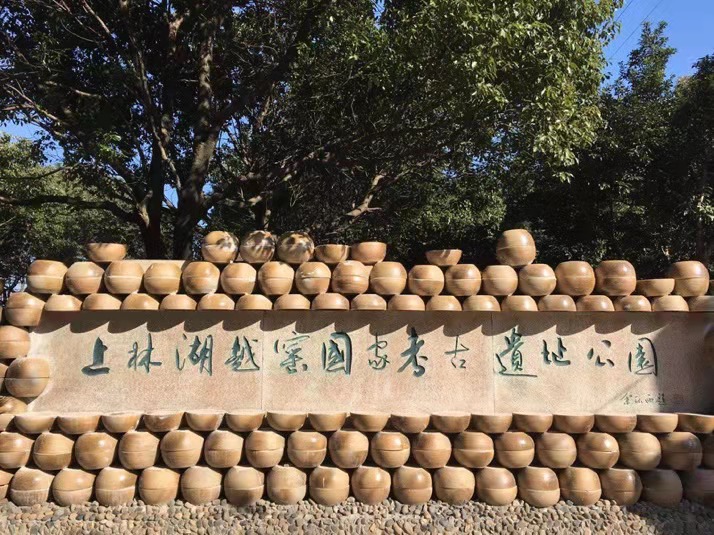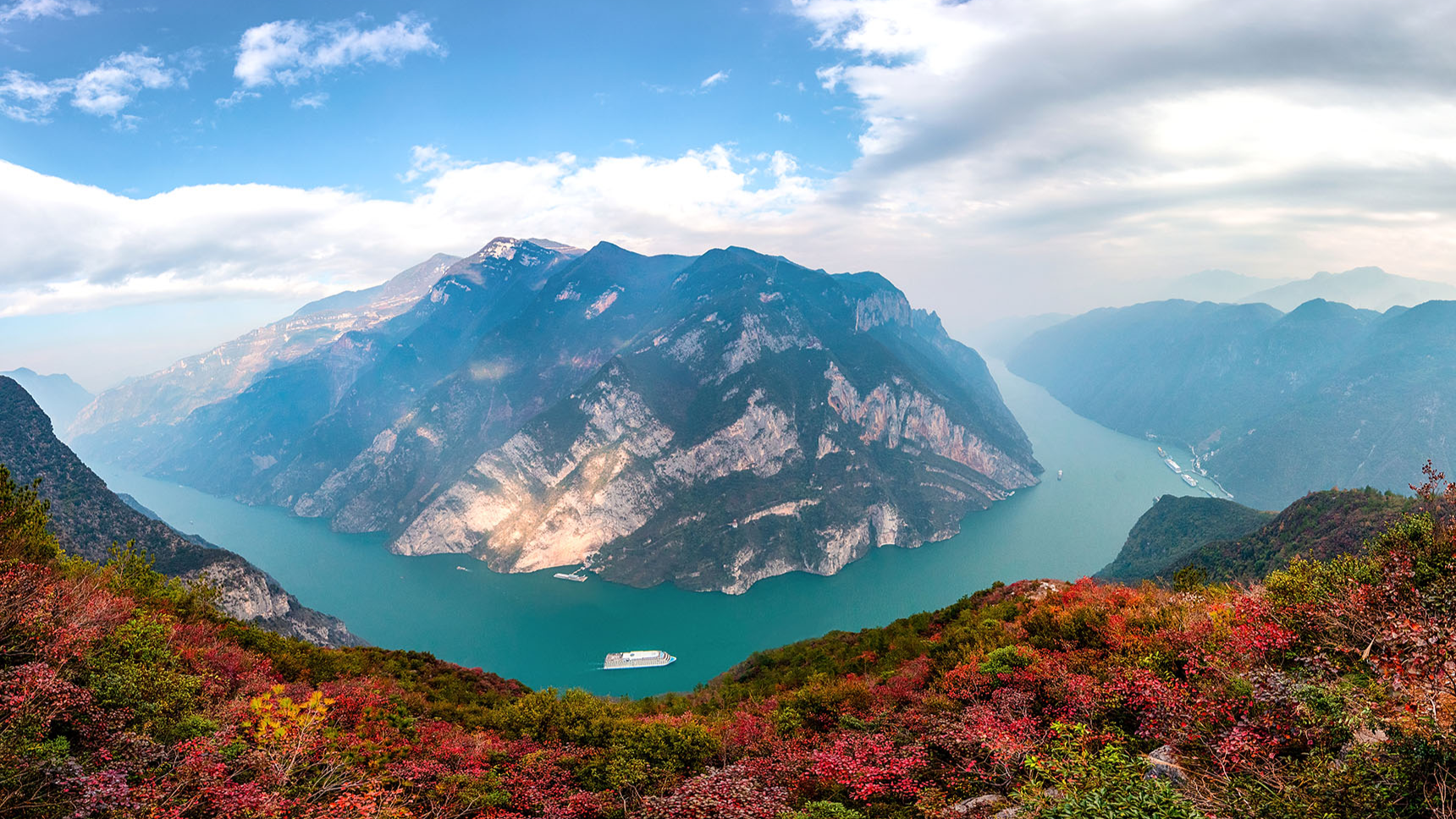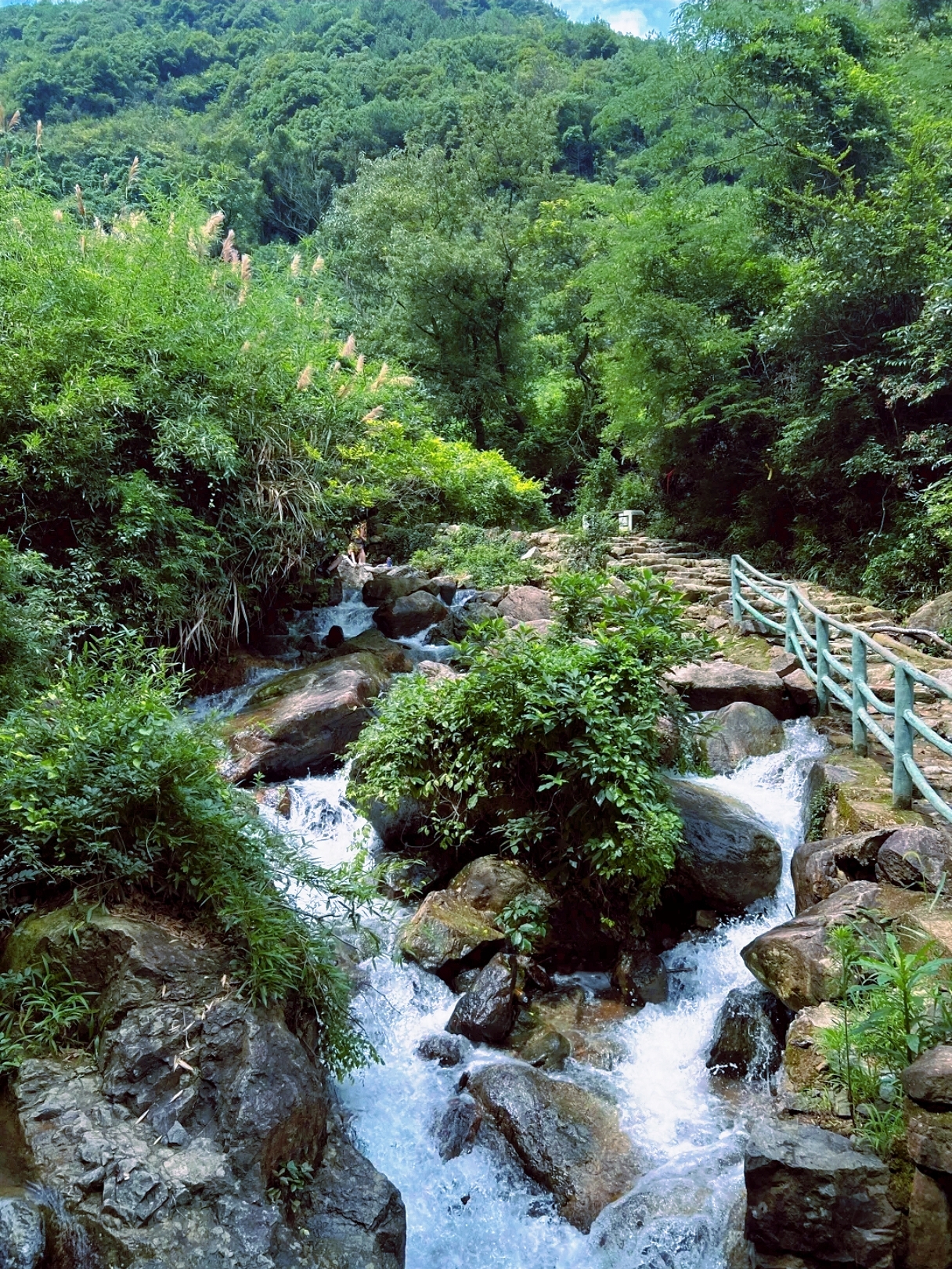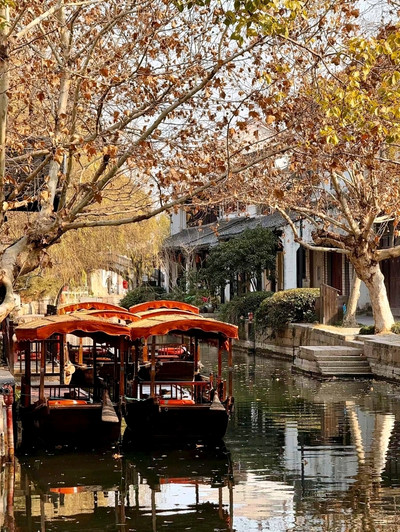Discover the Hidden Gem of Shanglin Lake Yue Kiln Sites: A Traveler’s Guide

An Essential Guide to Visiting Shanglin Lake Yue Kiln Sites
Nestled in the picturesque landscapes of Zhejiang Province, the Shanglin Lake Yue Kiln Sites are a treasure trove for history enthusiasts and cultural adventurers alike. Revered as one of the earliest cradles of Chinese porcelain production, these ancient kilns tell the story of a time-honored craft that flourished from the Eastern Han Dynasty to the Ming Dynasty. Here, you’ll find the remnants of a vibrant ceramic artistry that not only shaped the aesthetic sensibilities of ancient China but also influenced ceramic traditions as far afield as Japan and Korea.
As you wander through the expansive grounds of this UNESCO World Heritage site, you’ll be captivated by the serene beauty of the surrounding lakes and hills, which once provided essential resources for porcelain making. The sites are home to an impressive array of archaeological remains, from buried workshops and kilns to countless shards of exquisite celadon pottery scattered across the landscape. Each piece carries with it whispers of the past, echoing the skill and creativity of artisans who dedicated their lives to perfecting their craft.
Visiting the Shanglin Lake Yue Kiln Sites offers not just a glimpse into the world of ancient porcelain making, but also an opportunity to connect with the rich cultural heritage of China. Whether you’re an avid collector, a curious traveler, or a lover of history, this enchanting site promises an unforgettable experience that transcends time, allowing you to appreciate the artistry and ingenuity of a civilization that has left an indelible mark on the world. So pack your bags and prepare to embark on a journey through history at one of China’s most significant cultural landmarks.
In This Guide
- An Essential Guide to Visiting Shanglin Lake Yue Kiln Sites
- The Rich History and Legends of Shanglin Lake Yue Kiln Sites
- Main Highlights: What You Absolutely Can’t Miss
- Planning Your Visit: A Practical Guide
- Tickets: Prices, Booking, and Tips
- How to Get There: A Complete Transportation Guide
- Local Cuisine and Accommodation Nearby
- Frequently Asked Questions
- Final Thoughts on Your Trip
The Rich History and Legends of Shanglin Lake Yue Kiln Sites
Nestled in the verdant landscape of Zhejiang Province, the Shanglin Lake Yue Kiln Sites stand as a testament to China’s rich ceramic heritage, encapsulating centuries of artistry and innovation. Established during the Eastern Han Dynasty in the 1st century, these kilns were among the earliest cradles of porcelain production in China. The site, which sprawls across an area of approximately 231.69 hectares, is dotted with the remnants of workshops, kilns, and an abundance of porcelain shards, all of which narrate the story of a thriving industry that flourished for centuries.
The Yue Kiln Sites are particularly renowned for their role in the evolution of celadon, a unique type of porcelain characterized by its jade-green glaze. From the Tang Dynasty through the Five Dynasties and into the Song Dynasty, these kilns produced some of the finest examples of celadon ware, earning a reputation that extended far beyond China’s borders. The artistic achievements of the artisans here not only defined the aesthetics of Chinese ceramics but also influenced pottery traditions across East Asia, including Japan and Korea.
Legends surrounding the Shanglin Lake Yue Kiln Sites speak of the connection between the natural landscape and the artisans’ craft. It is said that the pristine waters of Shanglin Lake, along with the rich clay and abundant firewood found in the surrounding hills, provided the perfect resources for creating exquisite porcelain. The interplay of nature and human ingenuity is reflected in the delicate craftsmanship of the celadon pieces produced here, many of which were designed for both everyday use and ceremonial purposes.
As the centuries progressed, the kilns at Shanglin Lake continued to innovate, adapting their techniques and styles to meet the evolving tastes of dynasties and markets. Historical records indicate that by the 9th century, Yue celadon was not only a staple in Chinese households but also a sought-after commodity in international trade. The exquisite quality and unique glazing techniques made these ceramics highly prized, and they found their way into the homes of nobility across Asia, Africa, and even Europe.
The decline of the Shanglin Lake Yue Kiln Sites began in the late Ming Dynasty as new ceramic centers emerged and production techniques evolved. However, the legacy of these kilns remains indelibly etched in the fabric of Chinese cultural history. Today, they stand not only as archaeological sites but as cultural icons that reflect the ingenuity and artistry of ancient Chinese civilization.
Visitors to the Shanglin Lake Yue Kiln Sites can immerse themselves in this rich history, exploring the remnants of the kilns and the surrounding natural landscape that sustained them. The site is a living museum of porcelain production, inviting travelers to appreciate the craftsmanship that has been passed down through generations and to reflect on the enduring influence of celadon on global ceramic traditions.

Shanglin Lake Yue Kiln Sites.
Main Highlights: What You Absolutely Can’t Miss
The Shanglin Lake Yue Kiln Sites offer a fascinating glimpse into the rich heritage of porcelain production in China, particularly the esteemed celadon tradition. As you explore this UNESCO World Heritage site, here are the main highlights you absolutely cannot miss:
1. The Ancient Kiln Complex
At the heart of the Yue Kiln Sites lies the remarkable remnants of ancient kilns, some dating back to the Eastern Han Dynasty (1st century AD). Wander through the site and take in the sheer scale of the kilns, which were pivotal in establishing the celadon tradition. The ruins include dragon kilns, a specific type of kiln structure that showcases the sophisticated firing techniques of the time.
2. Porcelain Shard Accumulations
Scattered across the site are vast accumulations of porcelain shards, offering a tangible connection to the artisans of centuries past. These remnants illustrate the evolution of celadon artistry and allow visitors to witness the craftsmanship that has influenced porcelain production throughout Asia and beyond.
3. Historic Workshops and Production Facilities
The remnants of ancient workshops provide insight into the production processes that defined the celadon industry. As you stroll through these areas, you can imagine the artisans at work, shaping and glazing their creations. The preserved environment, including clay zones and firewood resource areas, further enhances the historical experience.
4. Cultural Landscape
The stunning surroundings of Shanglin Lake and the adjacent Guyinding Lake contribute to the site’s charm. The gentle slopes and waterways not only provided essential resources for porcelain production but also create a picturesque backdrop for exploration. Spend time admiring the natural beauty that has remained largely untouched since the kilns were in operation.
5. Exhibition at the Shanglin Lake Institute of Cultural Heritage Protection
Don’t miss the opportunity to visit the nearby Shanglin Lake Institute, where exhibitions detail the history and significance of the Yue Kiln Sites. Engaging displays and artifacts offer a deeper understanding of the celadon-making process and its impact on global ceramic traditions.
6. Celadon Artistry
Take a moment to appreciate the exquisite celadon pottery that originated from these kilns. Known for its jade-like glaze and intricate designs, celadon has been celebrated for centuries. Look for local artisans who may still practice this ancient craft, offering a chance to purchase authentic pieces that carry on the legacy of the Yue Kiln.
7. Impact on Global Ceramics
As you explore, consider the far-reaching influence of the Yue Kiln Sites. From the 9th to the 16th centuries, celadon works were not only produced for the imperial courts but also exported across Asia, Africa, and Europe. This aspect of the site underscores the significant role it played in cultural exchange and the development of porcelain craftsmanship worldwide.
8. Guided Tours
To fully immerse yourself in the historical narrative of the site, consider joining a guided tour. Knowledgeable guides can provide in-depth insights and stories that enhance your understanding of the significance of the Yue Kiln Sites within the broader context of Chinese history and culture.
9. Photography Opportunities
With its scenic landscapes and historical structures, the Shanglin Lake area offers plenty of opportunities for stunning photographs. Capture the serene beauty of the lakes, the intricate details of the porcelain shards, and the grandeur of the ancient kilns, creating lasting memories of your visit.
Visiting the Shanglin Lake Yue Kiln Sites is not just a journey through ancient porcelain history; it’s an exploration of the artistry, culture, and natural beauty that has shaped this remarkable region. Be sure to take your time to absorb the stories and craftsmanship that make this site a true gem of cultural heritage.

Shanglin Lake Yue Kiln Sites.
Planning Your Visit: A Practical Guide
Planning Your Visit: A Practical Guide to Shanglin Lake Yue Kiln Sites
Nestled in the picturesque landscape of Zhejiang Province, the Shanglin Lake Yue Kiln Sites present a fascinating glimpse into China’s ancient porcelain-making history. As a UNESCO World Heritage site, these ruins are not just remnants of the past; they are a testament to the artistry and ingenuity of ancient Chinese craftsmen. Here’s everything you need to know to make the most of your visit.
Getting There
Location:
The Shanglin Lake Yue Kiln Sites are located in the northeast of Zhejiang Province, China. The central point coordinates are approximately N 30°07′50″, E 121°19’35″.
Transportation:
– By Air: The nearest major airport is Hangzhou Xiaoshan International Airport (HGH). From there, you can rent a car or take a bus to Cixi, the city closest to the sites.
– By Train: Cixi is accessible via train from major cities like Hangzhou and Shanghai. Once in Cixi, local buses or taxis can take you to the kiln sites.
– By Car: If you prefer driving, the journey from Hangzhou takes about 1.5 hours. Follow the signs for Cixi and then for the Shanglin Lake area.
Best Time to Visit
The ideal time to explore the Shanglin Lake Yue Kiln Sites is during the spring (April to June) and autumn (September to November) months when the weather is mild and the natural scenery is at its most vibrant. Avoid the peak summer months if you are sensitive to heat, as temperatures can soar.
What to Expect
Upon arrival, visitors will find a vast area of approximately 231.69 hectares filled with historical artifacts from the ancient porcelain production era. Here’s what to look forward to:
- Archaeological Remains: Explore the extensive ruins, including kiln sites, workshop remains, and accumulations of porcelain shards. Each artifact tells a story of the artisans who once worked here.
- Scenic Views: The sites are surrounded by the serene waters of Shanglin Lake and Guyinding Lake, providing a beautiful backdrop for photography and quiet reflection.
- Interpretive Displays: Look for informational signs and displays that explain the significance of the sites and the celadon production process.
Visitor Facilities
- Guided Tours: Consider joining a guided tour to gain deeper insights into the history and significance of the porcelain-making tradition. Many local guides are knowledgeable and can provide context to what you see.
- Visitor Center: There may be a small visitor center where you can find maps, brochures, and additional information about the site and its historical context.
- Rest Areas: Bring a picnic or enjoy local snacks at designated resting spots. The natural beauty of the area lends itself well to a peaceful lunch outdoors.
Local Culture and Etiquette
- Respect the Heritage: As a UNESCO site, it’s important to treat the area with respect. Follow all posted guidelines, refrain from climbing on ruins, and avoid littering.
- Photography: Feel free to take photos, but be respectful of other visitors and the site itself. Avoid using flash in sensitive areas.
Nearby Attractions
After exploring the kiln sites, consider visiting nearby attractions:
– Longquan Kiln Sites: Just a short drive away, this site offers another perspective on ancient celadon production and showcases the evolution of porcelain-making techniques.
– Cixi City: Explore the local culture, cuisine, and markets. Cixi is known for its delicious seafood and unique local dishes.
Practical Tips
- What to Bring: Comfortable walking shoes are a must, as you’ll be exploring uneven terrain. Bring water, sunblock, and a hat for sunny days. A camera is essential to capture the stunning landscape and historical artifacts.
- Language: While some locals may speak basic English, it’s helpful to learn a few Chinese phrases or have a translation app handy.
By immersing yourself in the rich history of the Shanglin Lake Yue Kiln Sites, you will not only witness the artistry of ancient Chinese porcelain but also gain a deeper appreciation for the cultural heritage that continues to influence the world today. Enjoy your journey through time!

Shanglin Lake Yue Kiln Sites.
Tickets: Prices, Booking, and Tips
Visiting the Shanglin Lake Yue Kiln Sites is a unique opportunity to explore the rich heritage of ancient Chinese porcelain-making. Here’s a helpful guide to ensure your experience is seamless and enjoyable.
Ticket Information
- Entrance Fee: The admission ticket to the Shanglin Lake Yue Kiln Sites is approximately RMB 40 (around $6 USD), making it an affordable cultural excursion.
- Children and Seniors: Discounts may be available for children under 12 and seniors over 65. It’s advisable to carry valid identification to benefit from these discounts.
- Group Rates: If you are traveling with a group (typically 10 or more), inquire about group rates which can offer additional savings.
Booking Tips
- Advance Purchase: While tickets can often be purchased on-site, consider buying them in advance online, especially during peak tourist seasons (spring and fall). This can save you time and ensure entry on busy days.
- Guided Tours: For a richer experience, consider booking a guided tour. Many local agencies offer packages that include entrance fees and a knowledgeable guide who will provide insights into the history and significance of the kiln sites.
- Audio Guides: If you prefer exploring at your own pace, check if audio guides are available for rent at the entrance. These can enhance your understanding of the complex’s historical context.
Visiting Hours
- Opening Times: The site is generally open from 8:30 AM to 5:00 PM. It’s best to arrive early in the day to avoid crowds and enjoy a tranquil exploration.
- Closed Days: Occasionally, the site may close for maintenance or special events, so it’s wise to check the official website or local tourist information before planning your visit.
Getting There
- Transportation: The Yue Kiln Sites are accessible via public transportation or taxis from nearby cities like Ningbo or Hangzhou. If you’re driving, ample parking is available at the site.
- Best Time to Visit: The ideal months for visiting are April to June, and September to November when the weather is mild and the landscapes are particularly beautiful.
Additional Tips
- What to Bring: Wear comfortable shoes as you will be walking over various terrains. Don’t forget your camera to capture the stunning scenery and historical artifacts!
- Respect the Heritage: As these sites are of significant cultural importance, always follow posted guidelines and respect the environment.
Exploring the Shanglin Lake Yue Kiln Sites offers an engaging glimpse into China’s artistic heritage. With the right planning, your visit can be both enriching and memorable. Enjoy your journey into the past!
How to Get There: A Complete Transportation Guide
Reaching the enchanting Shanglin Lake Yue Kiln Sites involves navigating through the scenic landscapes of Zhejiang Province, where ancient craftsmanship meets breathtaking natural beauty. Here’s how to make your journey to this significant cultural heritage site as smooth as possible.
Getting to Shanglin Lake Yue Kiln Sites
By Air
The nearest major airport is Hangzhou Xiaoshan International Airport (HGH), located approximately 120 kilometers (75 miles) from the Yue Kiln Sites. This airport serves both domestic and international flights, making it a convenient entry point.
- From Hangzhou Airport to Shanglin Lake:
- Taxi: The most direct option is to take a taxi or a ride-hailing service, which takes about 1.5 to 2 hours, depending on traffic.
- Airport Shuttle: Look for shuttle services to Hangzhou city center, then transfer to a long-distance bus or train heading towards Cixi or Ningbo.
By Train
If you prefer a more scenic route, consider traveling by train to Ningbo, which is well-connected to major cities in China.
- From Ningbo to Shanglin Lake:
- Train: Take a train from your starting city to Ningbo. From Ningbo, you can find local buses or taxis to reach Cixi City, which is close to the Yue Kiln Sites.
- Public Transport: Once in Cixi, take a local bus or a taxi to the Shanglin Lake area. The journey should take around 30 to 40 minutes.
By Bus
For travelers already in the region, long-distance buses from cities like Hangzhou and Ningbo are a viable option.
- From Hangzhou:
-
Head to the Hangzhou East Bus Station and look for buses heading to Cixi. The bus ride typically takes 2 to 3 hours.
-
From Ningbo:
- Buses from Ningbo’s South Bus Station to Cixi are frequent, with a travel time of about 1 hour.
Getting Around
Once you arrive in the vicinity of the Yue Kiln Sites, transportation options include:
- Taxis and Ride-Hailing Services: Easily accessible and the most convenient way to reach the sites from local accommodations.
- Bicycles: For the adventurous, renting a bicycle can provide a unique way to explore the scenic landscapes surrounding Shanglin Lake and the kiln sites.
- Walking Tours: With the area’s rich historical and cultural significance, walking is a delightful way to immerse yourself in the surroundings.
Tips for Your Journey
- Language: While major transportation hubs may have English signage, having a translation app or a phrasebook can be helpful for navigating local transport.
- Cash: While digital payment options are prevalent in China, having some cash on hand can be useful for smaller vendors or rural areas.
- Weather: Check the local weather forecast before you travel, as conditions can vary significantly throughout the year.
With this transportation guide, you’re well-equipped to embark on your journey to the Shanglin Lake Yue Kiln Sites, where history and artistry await. Enjoy your exploration of this UNESCO World Heritage site, where the legacy of ancient Chinese porcelain production comes alive against a backdrop of stunning scenery.

Shanglin Lake Yue Kiln Sites.
Local Cuisine and Accommodation Nearby
When visiting the enchanting Shanglin Lake Yue Kiln Sites, immerse yourself not just in the rich history of ancient porcelain-making but also in the local flavors and warm hospitality that Zhejiang Province has to offer. Here are a few recommendations for delightful dining options and cozy accommodations nearby.
Dining Recommendations
-
Shanglin Lake Restaurant
Nestled by the scenic shores of Shanglin Lake, this restaurant serves traditional Zhejiang cuisine, with a focus on fresh, locally sourced ingredients. Don’t miss their signature dish, Dongpo Pork, a succulent braised pork belly that melts in your mouth, paired perfectly with a bowl of fragrant rice. -
Cixi Hometown Food Court
A vibrant spot popular with locals, this food court offers a variety of street food options. Sample Fried Tofu Pudding and Cixi Fried Noodles, both bursting with flavor. The lively atmosphere is perfect for mingling with locals and enjoying an authentic dining experience. -
Jiangnan Tea House
After a day of exploring the kiln sites, unwind at this charming tea house. Sip on fragrant Longjing (Dragon Well) tea, a specialty of the region, while enjoying light snacks like steamed buns or sweet rice cakes. The tranquil setting offers picturesque views of the surrounding hills and lake.
Accommodation Options
-
Shanglin Lake Resort
This lakeside resort offers a blend of modern comfort and traditional aesthetics. With spacious rooms featuring stunning views of Shanglin Lake, it’s an ideal base for exploring the kiln sites. The on-site restaurant serves a delectable breakfast buffet, ensuring you start your day right. -
Cixi International Hotel
Located just a short drive from the Yue Kiln Sites, this hotel features comfortable rooms with modern amenities. The hotel also offers a spa and wellness center, perfect for relaxing after a day of sightseeing. Enjoy international and local dishes at the hotel’s restaurant, catering to diverse tastes. -
Homestays in Cixi
For a more intimate experience, consider staying at a local homestay. Many families in Cixi offer cozy accommodations, allowing you to experience daily life in this charming region. Enjoy home-cooked meals made from fresh ingredients while soaking in the warmth of local hospitality.
Local Market Experience
If you have some extra time, visit the Cixi Local Market, where you can sample various local snacks and buy unique souvenirs. From freshly made pickled vegetables to artisanal ceramics, this market showcases the rich culinary heritage and craftsmanship of the area.
With these culinary delights and welcoming accommodations, your visit to the Shanglin Lake Yue Kiln Sites will be an unforgettable journey into the heart of Zhejiang’s culture and history.

Shanglin Lake Yue Kiln Sites.
Frequently Asked Questions
Frequently Asked Questions about Shanglin Lake Yue Kiln Sites
-
Where are the Shanglin Lake Yue Kiln Sites located?
The Shanglin Lake Yue Kiln Sites are situated in the northeast of Zhejiang Province, China. Specifically, they are near Shanglin Lake and encompass an area of approximately 231.69 hectares, showcasing a significant historical landscape related to ancient porcelain production. -
What is the historical significance of the Yue Kiln Sites?
Established during the Eastern Han Dynasty, the Yue Kiln Sites are among the earliest centers of porcelain making in China. They represent the peak of celadon production, particularly during the Tang and Song dynasties, and are crucial for understanding the evolution of ceramic craftsmanship in East Asia. -
What can visitors expect to see at the site?
Visitors will find a variety of archaeological remains, including kiln ruins, workshops, and an abundance of porcelain shards. The area is also home to historic settings related to porcelain production, such as clay zones and water transport routes, which offer insight into ancient production methods. -
Is there an entrance fee or guided tours available?
While specific entrance fees can vary, many visitors can access the site for free or for a nominal fee. Guided tours may be available through local cultural heritage organizations or museums, providing detailed insights into the history and significance of the kilns. -
How can I reach the Shanglin Lake Yue Kiln Sites?
The sites are accessible by car or public transport from major cities in Zhejiang Province, such as Hangzhou or Ningbo. It’s advisable to check local bus schedules or consider hiring a taxi or tour service for a more convenient trip. -
Are there any facilities available for visitors?
Basic facilities such as restrooms may be available at or near the site. However, it’s a good idea to bring water and snacks, as well as any other personal items you might need, as amenities can be limited. -
What is the best time to visit the Yue Kiln Sites?
The ideal time to visit is during the spring (April to June) or fall (September to November) when the weather is mild and enjoyable for outdoor exploration. Avoid the peak summer months, as they can be quite hot and humid. -
Can I take photographs at the site?
Yes, photography is generally allowed at the Shanglin Lake Yue Kiln Sites. However, it’s advisable to be respectful of the historical significance of the area and avoid using flash in sensitive locations.
Final Thoughts on Your Trip
As you conclude your journey through the enchanting landscapes of the Shanglin Lake Yue Kiln Sites, take a moment to reflect on the rich tapestry of history woven into every shard and kiln you encountered. This UNESCO World Heritage site is not only a testament to the ancient artistry of Chinese celadon but also serves as a bridge connecting modern travelers to the profound legacy of craftsmanship that has endured for centuries.
Each step through the remnants of these kilns is a step back in time, where the echoes of artisans can still be felt in the air. Imagine the skilled hands that shaped exquisite porcelain, their work transcending borders and influencing cultures far beyond China. The stories of trade, innovation, and artistic evolution resonate throughout this remarkable site, reminding us of the universal language of art that binds humanity together.
As you prepare to leave, allow the serene beauty of Shanglin Lake and its surroundings to linger in your memory. This site is more than just an archaeological treasure; it is a celebration of creativity, heritage, and the enduring pursuit of beauty. Whether you are an art enthusiast, a history buff, or simply a curious traveler, your visit has undoubtedly enriched your understanding of the cultural significance of porcelain.
May the inspiration you found here ignite a passion for discovery and appreciation of the world’s heritage. Carry the essence of Shanglin Lake with you as you continue your travels, and remember that every destination holds its own unique story waiting to be uncovered. Safe travels!